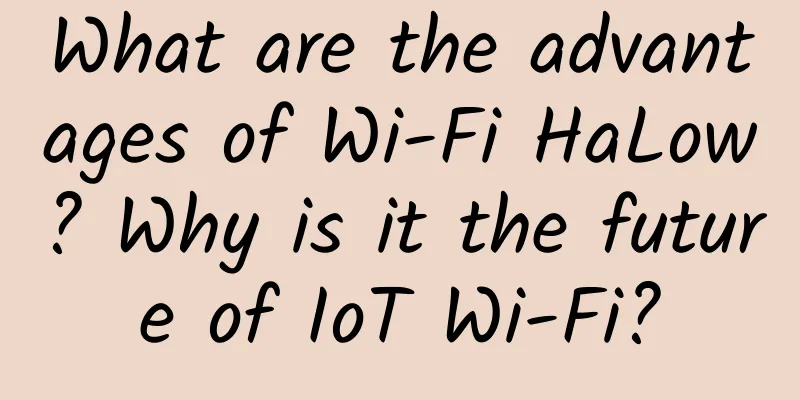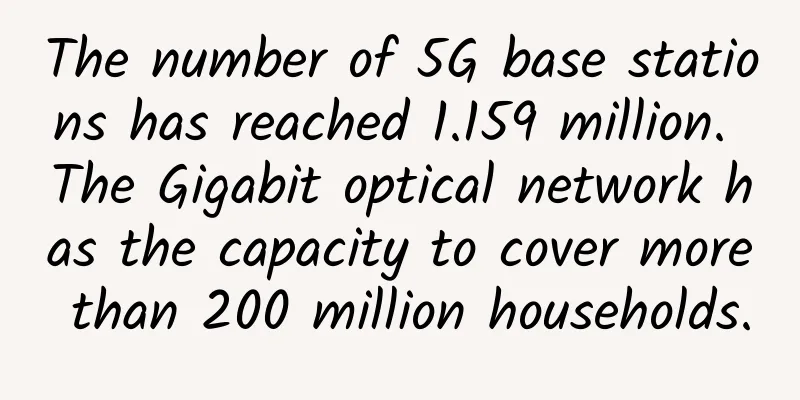What can digital twins bring to wireless communications?

|
Twins, that is, identical twins. Since two people share exactly the same genes, they are connected, allergic to the same food, and have the same chance of suffering from the same disease, so the treatment plan for one person can be directly copied to the other. The so-called digital twin is to create a "digital clone" of a real thing on a computer system. Although one is real and the other is virtual, they operate exactly the same, so the original object can synchronize its own status to the digital clone in real time, and the digital clone can also continuously seek through advanced tools such as big data and artificial intelligence, and send the best decision-making plan to the original object for execution. Digital twins are essentially a tool for solving complex system problems. Their value lies in turning digital clones into test beds for the real entities, which are used to continuously conduct technical verification, optimization, and trial and error in the digital world. The real entity in the real world remains stable, and the results of the digital clones can be used when necessary. This can naturally reduce risks, save costs, and improve efficiency. Digital twins originated in the aerospace and military fields, and have been continuously expanded to vertical industries such as smart manufacturing and smart cities. As Gartner has included digital twins in the top ten strategic technology trends of the year (2017-2019) for three consecutive years, the communications industry has also begun to study the application of digital twins. For the origin of digital twins, please refer to this article from the previous issue: "Digital twins, originated from a disaster that almost happened?" Why does the communications industry need digital twins?Students who often conduct wireless network testing, operation and maintenance, and optimization may have a deep understanding of the following two words: "walking on thin ice and facing the abyss." Mobile communication networks are part of the infrastructure, and the services they provide, such as making phone calls and surfing the Internet, are also essential needs that cannot be left behind for even a moment. Once an operational error causes a large-scale, long-term network outage or performance degradation, it is no less than a major accident. Therefore, all operators are extremely cautious in any operation on the "live network". For example, for testing new functions, they generally have to strictly select and limit the area, repeatedly confirm the modification parameters, and implement the operation in the early morning when everyone is sleeping, for fear of problems affecting users. The communication system is an extremely complex and huge system. The end-to-end network contains various network elements, each of which has multiple different jobs and different focuses. We are like blind men touching an elephant, only seeing the trees but not the forest. We have difficulty in grasping the overall situation, react slowly to changes in user needs, and lack the tools to accurately predict network performance. We can only take small steps and move forward tentatively. As the saying goes, "A wise man makes many plans, but he is bound to make mistakes." No matter how "carefully" we plan, it is difficult to achieve success smoothly. There will always be various unexpected problems during execution. If we can have a system that can not only fully verify the validity of parameter combinations before deployment, but also find the optimal parameters through intelligent optimization, the base station will run exactly as expected after the configuration is issued. This is the so-called "closed-door development, out of the door in the right track", this is the realm. In order to design this system, the industry has turned its attention to a new digital concept: That’s right: digital twins. How does the communications industry apply digital twins?Communication networks have unique advantages in building "digital twin" systems. First of all, each base station in the network actually has an accurate model in the network management system. It not only includes engineering parameters such as site, longitude and latitude, antenna height, azimuth, and elevation, but also includes many functional characteristics, thousands of wireless parameters that shape network performance, and ground parameters that work in coordination with other network elements. These data can already build a digital base station. Then, in the core network, all the data of each user is stored, including where each user is, what package he uses, what apps he likes to use, what mobile phone he has, when and to whom he calls, etc. Generally speaking, operators manage this data very strictly, so there is no need to worry about being spied on. Third, as long as your mobile phone has a signal, it is constantly interacting with the network. In addition to the actual data sent, there are also signaling for system control, detecting wireless signals in various frequency bands, reporting the measured signal quality, and so on. The base station is even busier. In addition to providing services for mobile phones, it also summarizes all the collected information into performance KPIs to determine your user experience. In other words, the entire system has a comprehensive grasp of the content and flow of information. It can be seen that the current communication network has built a very complete software system on top of proprietary hardware, and has such detailed data that can be interactively updated in real time. On this basis, we can build a virtual, high-precision digital twin system on a general-purpose server by making appropriate simplifications and trade-offs. The first thing we need to do is to build a fully virtualized twin system end to end based on a general server. Twin phones: Simulate multiple phones with different capabilities on a server, and configure them to randomly perform different behaviors to simulate real users. For example, x% of phones watch videos, y% of phones play games, z% of phones move at high speeds... These virtual phones do not need to actually transmit signals because they are connected to virtual wireless channels. Twin wireless channel: It needs to be based on high-precision maps and the environmental information of the mobile phone, and use a ray tracing model to simulate the reflection, scattering, diffraction, and fading of wireless signal propagation. It can also make dynamic adjustments based on the movement trajectory of the mobile phone. Interference in various scenarios can also be simulated. It can be said to be very comprehensive. Knowledge graph of digital twin channel modeling methods for B5G and 6G communications, source: Digital twin channel research for B5G and 6G communications Twin base station: a base station completely simulated by a server, which includes all the software and hardware modules of a physical base station in detail. The software algorithm running on it is exactly the same as that of a real base station. The only difference is that the base station does not need to actually transmit signals, but instead uses the above-mentioned virtual wireless channel. Twin core network: The current commercial core network has been fully virtualized. You only need to take it directly, and then perform some streamlining and adaptation before you can use it. This end-to-end virtualized twin system can simulate a real base station with 1:1 fidelity by loading the same software algorithms as physical mobile phones, base stations, and core networks, and configuring the same parameters. The results of a service running in the twin system are consistent with the results under the real base station. For example, this twin system can accurately predict network performance: suppose you are watching a video on your mobile phone in People's Square, and at the same time a virtual phone is watching the same video in the virtual People's Square, the video clarity and smoothness on your real phone and the virtual phone are exactly the same. Having the most basic twin system is not enough. We also need to build an intelligent and automated network application layer on it to solve practical problems in the physical network, including end-to-end network SLA quality assurance, precise network optimization, large-scale antenna weight optimization, user experience improvement, etc. Digital Twin Network Structure, Source: Digital Twin Network (DTN) White Paper As shown in the figure above, the data flow between the network application layer, the twin network layer and the physical network layer constitutes a large loop, which we call the "external loop"; within the twin network layer, there is also an "internal loop" of continuous iterative tuning and simulation verification. The solutions to these problems are generally the following: The operation process of the digital twin network, source: 6G wireless network autonomy white paper based on digital twin network First, the system builds a digital twin based on the physical network entity; the operation and maintenance personnel issue the intention, and the system translates it into network autonomy requirements through the intent network; the digital twin is demand-oriented, and continuously performs self-iterative optimization and simulation verification internally until the performance of the twin network reaches the expected goal; then the digital twin network generates a "digital planning body" and uses it to synchronize the optimized data to the physical network entity. This is the "inner loop." After the physical network runs with the new data, it is found that the results are still different from the target, so the results are fed back to the digital twin for further optimization. This is the "external closed loop". These two closed loops continue to operate, driving the physical network performance to achieve the expected goals. Below we take network rate optimization as an example to illustrate the role of digital twin networks. Currently, we are facing the following problems when optimizing wireless rate:
After the problem location and solution process, it will seriously affect the user's perception and satisfaction;
the actual extent of the impact of different factors in the external or internal environment;
whether the impact is large or small, positive or negative;
Schematic diagram of wireless rate optimization based on digital twin network, source: Digital Twin Network (DTN) White Paper With a digital twin network, geospatial simulation, wireless coverage simulation, and wireless parameter configuration simulation can be automatically performed to promptly identify user perception issues. Based on the simulation results, new sites can be added, coverage optimized, and parameters optimized in the twin network, and network rate can be iteratively verified. Ultimately, the optimized solution will be output to the physical network for execution. Of course, some operations need to be performed manually, such as building new sites and adjusting the antenna coverage direction. These manual operations are combined with the automatic execution of the physical network to ultimately achieve the goal of optimizing the network rate. Future OutlookIn 5G and previous communication systems, the various stages of the network life cycle, such as planning, construction, operation and maintenance, and optimization, are separated from each other, resulting in low efficiency and high costs. Self-intelligent networks are proposed to solve these problems. Digital twins are an important way to realize self-intelligent networks, and the industry has carried out extensive research on them. Comparison between 5G network operation and maintenance management and 6G digital twin network autonomy, Source: White Paper on 6G Wireless Network Autonomy Based on Digital Twin Network At present, the application of digital twins in communication networks is still in the early research stage, and the industry has not yet reached a consensus on the concept and connotation of digital twin networks. In addition, as a complex system built on a large-scale communication network, digital twin networks have many technical challenges that need to be overcome in terms of data, models and architecture. The industry's current exploration of digital twins on 5G networks is still external and fragmented. "External" means that the digital twin network and the physical network are separated in hardware and software, and have not been integrated, which limits the real-time and effectiveness of data synchronization and distribution; "fragmented" means that a high degree of automation is achieved for certain specific functions through a use case-driven approach, but the systematization and universality are not enough. Schematic diagram of the end-to-end architecture of the twin digital network. Source: White Paper on 6G Wireless Network Autonomy Based on Digital Twin Network In the 6G era, we hope to use the network's inherent computing power and inherent intelligence to build a digital twin network, and perform virtual-real docking, continuous planning, and fault self-healing on it, to achieve high-level autonomy and closed-loop autonomy throughout the network's life cycle, reduce manpower consumption, and significantly improve network operation efficiency. A journey of a thousand miles begins with a single step. With the dedicated efforts of colleagues in the industry, the seed of digital twins will surely blossom into a splendid flower in the 6G era. |
<<: Connecting the industrial ecosystem, 5G accelerates the empowerment of thousands of industries
>>: What is the success or failure of SDX?
Recommend
Telecom operators tighten cloud sovereignty and no longer want to be the big guys behind the scenes
"Carrier cloud" represented by China Te...
[Black Friday] spinservers: Dallas/San Jose dedicated servers starting from $59/month, E3-1280v5/32G/1TB NVMe/10Gbps bandwidth
spinservers has launched a promotion during Black...
Four major battles of the Internet of Things broke out in 2018
The concept of the Internet of Things (IoT) has b...
DogYun New Year Promotion: 30% off on Elastic Cloud/20% off on Classic Cloud, starting from 16 yuan/month, top up 100 yuan and get 10 yuan free
The Lunar New Year is here, and DogYun has launch...
One article explains what is VLAN, Layer 3 switch, gateway, DNS, subnet mask, MAC address
Last time we published what is arp address? What ...
RackNerd Christmas promotion, Los Angeles KVM architecture 1.5G memory annual payment starts at $16.8
RackNerd is a foreign VPS hosting company founded...
my country's cumulative investment in 5G network construction exceeds 260 billion
On February 23, the Mobile World Congress in Shan...
If you are in the communications industry, you will be out if you don’t understand these nine 5G issues
China's 5G era has arrived as promised! The f...
8 Internet startups that could change the industry
The current network industry seems to no longer f...
It has been almost three years since number portability was implemented. Who is the winner among the three major operators?
Since the three major operators in my country occ...
How to ensure consistency of Serverless business deployment updates?
Since I started working on Serverless tools, I of...
Huawei Software Development Cloud helps improve WeChat mini-program code quality
In the early morning of January 9, after more tha...
Combining VXLAN and EVPN
EVPN is one of the hottest network technologies i...
New space age opens opportunities for edge computing
Satellite communications are starting to become f...
T-Mobile plans to provide super-capacity 5G network within three years
According to foreign media reports, T-Mobile plan...









